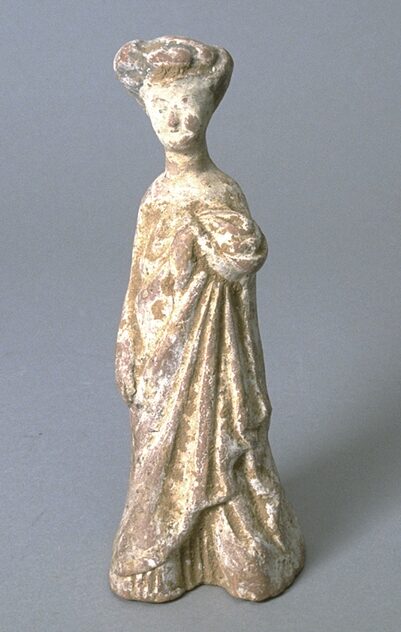Court Lady
Chinese

Description
Subject Matter:
An earthenware polychrome mingqi (明器) ("bright object") figure of a court lady of the Tang dynasty (618-906). Her sumptuous robes and hairstyle was in high fashion during the Tang. This figure would have been included in a tomb to accompany the deceased in the afterlife and was indicative of the wealth and status of the occupant.
Since the Qin dynasty (221 - 206 BCE), ceramic figures have been used to replace human sacrifice in burial practices as mingqi as a way to provide for the deceased. Mingqi could include houses, towers, gates, granaries, livestock pens, chicken coops, wells, cooking stoves, storage vessels, dishes, incense burners, and lamps. Figures could include horses, dogs, anthropomorphic animals and people, such as officials, guardians, servants, and entertainers. By the Han dynasty, they also included representations of common people engaged in the activities that consumed their daily lives, such a cooking. The tombs in southern provinces of Sichuan and Shaanxi have revealed a vast array of figures in playful and humorous poses. As grave goods, these mingqi included everything one would need to ensure a comfortable transition into the afterlife. The number of ceramic mingqi items in a tomb could reach numbers of a few to several hundred objects.
Physical Description:
An earthenware figure of a tall thin woman dressed in sumptous robes that she has gathered in her left hand, her hair coiffed high upon her head. It is covered in a white slip with traces of polychrome mineral pigment.
Usage Rights:
If you are interested in using an image for a publication, please visit https://umma.umich.edu/request-image/ for more information and to fill out the online Image Rights and Reproductions Request Form.